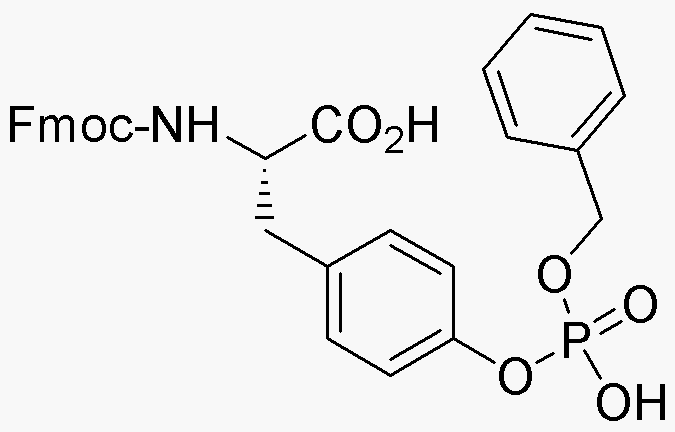Fmoc-O-benzylphospho-L-tyrosine is widely utilized in research focused on
- Peptide Synthesis: This compound serves as a key building block in the synthesis of phosphopeptides, which are vital for studying protein interactions and signaling pathways.
- Drug Development: Its role in drug design allows researchers to create targeted therapies that mimic natural phosphoproteins, enhancing the specificity and efficacy of treatments.
- Bioconjugation: The compound is used in bioconjugation processes to attach biomolecules to surfaces or other molecules, facilitating the development of biosensors and diagnostic tools.
- Research in Cancer Biology: By studying the interactions of phosphopeptides containing this compound, scientists can gain insights into cancer cell signaling, potentially leading to new therapeutic strategies.
- Analytical Chemistry: It is employed in various analytical techniques, such as mass spectrometry, to help identify and quantify phosphoproteins, contributing to a better understanding of cellular processes.
General Information
Properties
Safety and Regulations
Applications
Fmoc-O-benzylphospho-L-tyrosine is widely utilized in research focused on
- Peptide Synthesis: This compound serves as a key building block in the synthesis of phosphopeptides, which are vital for studying protein interactions and signaling pathways.
- Drug Development: Its role in drug design allows researchers to create targeted therapies that mimic natural phosphoproteins, enhancing the specificity and efficacy of treatments.
- Bioconjugation: The compound is used in bioconjugation processes to attach biomolecules to surfaces or other molecules, facilitating the development of biosensors and diagnostic tools.
- Research in Cancer Biology: By studying the interactions of phosphopeptides containing this compound, scientists can gain insights into cancer cell signaling, potentially leading to new therapeutic strategies.
- Analytical Chemistry: It is employed in various analytical techniques, such as mass spectrometry, to help identify and quantify phosphoproteins, contributing to a better understanding of cellular processes.
Documents
Safety Data Sheets (SDS)
The SDS provides comprehensive safety information on handling, storage, and disposal of the product.
Product Specification (PS)
The PS provides a comprehensive breakdown of the product’s properties, including chemical composition, physical state, purity, and storage requirements. It also details acceptable quality ranges and the product's intended applications.
Certificates of Analysis (COA)
Search for Certificates of Analysis (COA) by entering the products Lot Number. Lot and Batch Numbers can be found on a product’s label following the words ‘Lot’ or ‘Batch’.
*Catalog Number
*Lot Number
Certificates Of Origin (COO)
This COO confirms the country where the product was manufactured, and also details the materials and components used in it and whether it is derived from natural, synthetic, or other specific sources. This certificate may be required for customs, trade, and regulatory compliance.
*Catalog Number
*Lot Number
Safety Data Sheets (SDS)
The SDS provides comprehensive safety information on handling, storage, and disposal of the product.
DownloadProduct Specification (PS)
The PS provides a comprehensive breakdown of the product’s properties, including chemical composition, physical state, purity, and storage requirements. It also details acceptable quality ranges and the product's intended applications.
DownloadCertificates of Analysis (COA)
Search for Certificates of Analysis (COA) by entering the products Lot Number. Lot and Batch Numbers can be found on a product’s label following the words ‘Lot’ or ‘Batch’.
*Catalog Number
*Lot Number
Certificates Of Origin (COO)
This COO confirms the country where the product was manufactured, and also details the materials and components used in it and whether it is derived from natural, synthetic, or other specific sources. This certificate may be required for customs, trade, and regulatory compliance.


